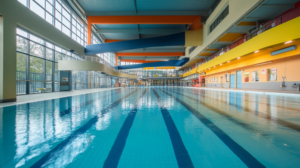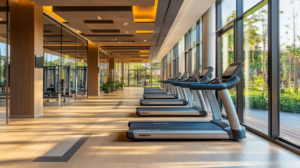Safety and well-being must remain at the heart of everything in the bustling world of leisure facilities—where fitness goals, relaxation, and community connections come together. But what makes a truly safe and thriving? It’s not just about the equipment or the rules but the broader framework supporting everyone inside.
SHEC (Safety, Health, Environment, and Community)—a holistic approach that weaves together all the vital aspects of a well-managed facility. By focusing on these four pillars, leisure spaces can not only prevent accidents and enhance wellbeing but also foster a culture of care that extends beyond the walls of the building. In this post, we’ll explore how SHEC plays a central role in elevating health and safety standards in leisure facilities across the UK, creating spaces where everyone can feel secure and supported.
1. Safety: Minimising Risks and Preventing Accidents
Safety is the first and most critical component of the SHEC framework. Leisure facilities often involve a wide range of physical activities, from gym workouts to swimming, and ensuring that the environment is free of hazards is key. Safety protocols should address everything from slip and trip hazards to the safe use of equipment and emergency response procedures. Regular risk assessments, routine equipment checks, and staff training are essential elements of a safety-first approach. By prioritising safety, leisure facilities can significantly reduce the likelihood of accidents and injuries, creating a safer environment for employees and visitors.
2. Health: Promoting Wellbeing for Employees and Customers
Health is another vital aspect of the SHEC framework. In leisure settings, employee health is a priority to ensure that staff can perform their roles effectively and remain safe in physically demanding environments. This includes providing training in first aid, manual handling, and mental health awareness. For customers, health promotion is equally important. Leisure facilities should offer clean, hygienic environments, clear health guidelines, and resources that encourage a healthy lifestyle, such as fitness classes, wellness programs, and mental health support. Health and safety policies should be designed not only to prevent illness and injury but also to promote the well-being of all involved actively.
3. Environment: Creating Sustainable and Safe Spaces
The environment in which leisure facilities operate is another key element of SHEC. Creating a sustainable and safe environment for employees and customers contributes to long-term success. This includes ensuring that facilities are properly maintained, with air quality, temperature, and lighting regularly monitored. It also involves managing waste and ensuring that chemical products used for cleaning and maintenance are handled safely. Sustainability is a growing concern, and leisure facilities are increasingly adopting eco-friendly practices, such as reducing energy consumption, recycling, and using non-toxic cleaning materials. A well-maintained and environmentally friendly space improves safety and boosts the facility’s reputation as a responsible business.
4. Community: Fostering a Culture of Care and Engagement
The community aspect of SHEC emphasises the importance of building a culture of care within the leisure facility. This involves creating strong connections between staff, visitors, and the wider community. By fostering a sense of responsibility and belonging, leisure facilities can create a positive environment where safety and well-being are prioritised. Community engagement also involves educating visitors about health and safety protocols, promoting mutual respect, and encouraging staff to communicate openly about potential risks. This holistic approach helps build trust between employees, clients, and the local community, creating a safer and more inclusive space for all.
5. SHEC in Practice: How Leisure Facilities Can Implement It
Implementing SHEC principles in leisure facilities involves adopting a clear, structured approach:
- Regular risk assessments and safety audits to identify and mitigate hazards.
- Ongoing training programs for employees to ensure they are equipped to handle emergencies and maintain safety standards.
- Health and wellbeing initiatives that support both employees and clients, including mental health programs and fitness challenges.
- Sustainability practices that reduce environmental impact include energy-saving measures and waste management strategies.
- Community outreach to build relationships with local organisations and encourage client engagement with health and safety policies.
Incorporating SHEC (Safety, Health, Environment, and Community) into leisure facility operations is crucial for maintaining high health and safety standards. The adoption of SHEC enhances the well-being of everyone involved and strengthens the facility’s reputation and long-term success. In a world where public health and environmental concerns are becoming increasingly important, integrating SHEC is a forward-thinking approach that ensures leisure facilities remain safe, sustainable, and community-focused.





